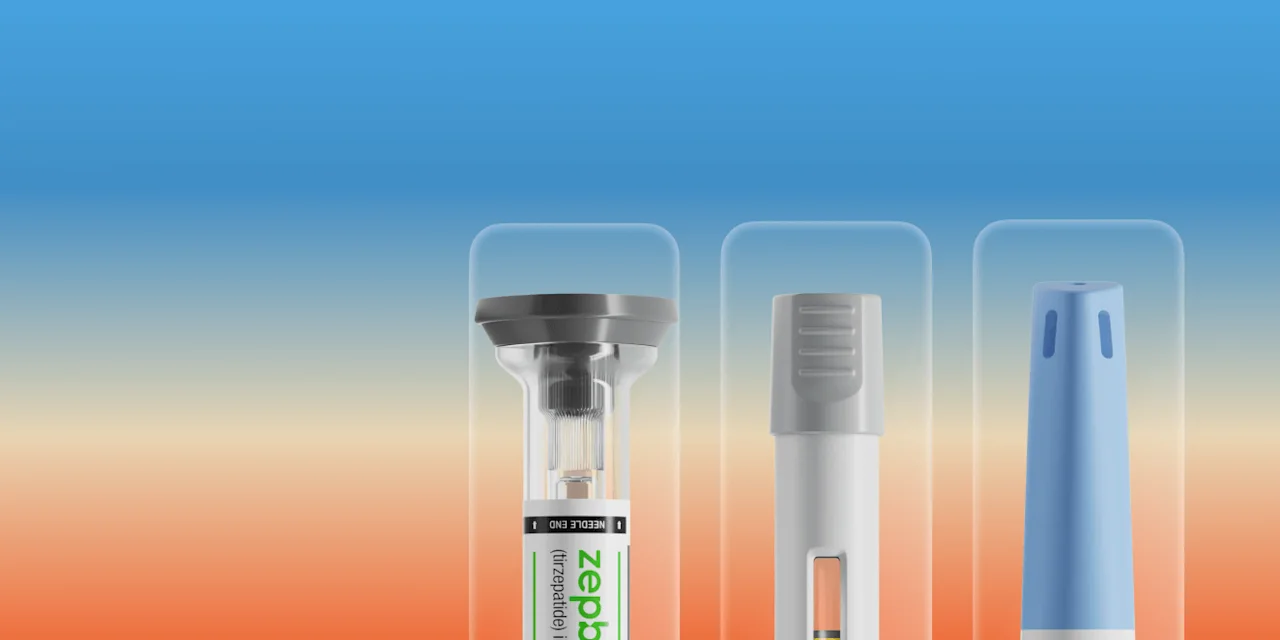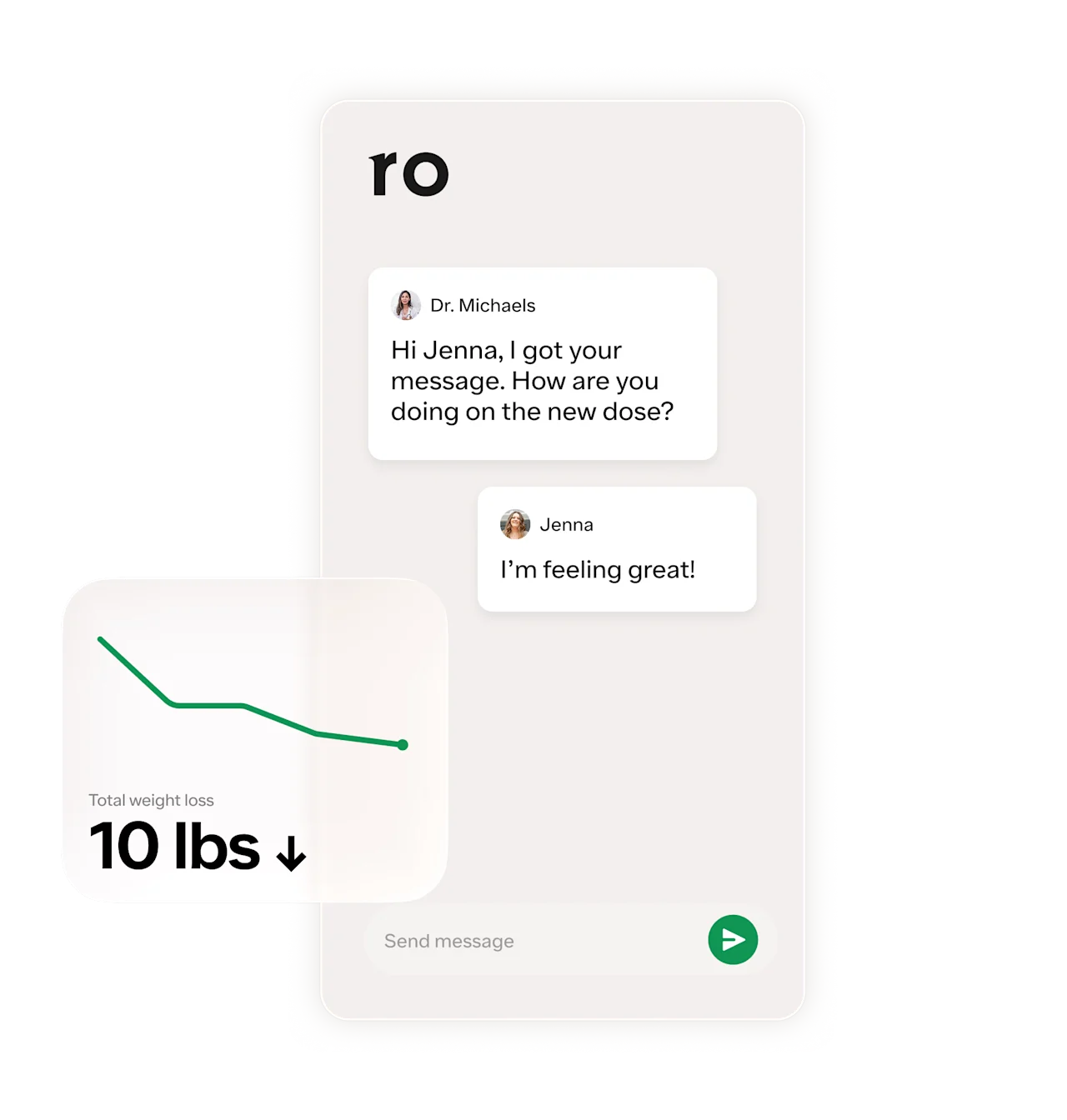Key takeaways
The recommended maintenance dosage of Wegovy is 2.4 milligrams (mg).
Wegovy comes in five dosage strengths. Health providers typically prescribe the lowest dosage to start and gradually increase it over four months.
It’s important to follow this dosing schedule as prescribed, in order to give your body time to get used to the medication and keep side effects manageable.
Here's what we'll cover
Here's what we'll cover
Here's what we'll cover
Key takeaways
The recommended maintenance dosage of Wegovy is 2.4 milligrams (mg).
Wegovy comes in five dosage strengths. Health providers typically prescribe the lowest dosage to start and gradually increase it over four months.
It’s important to follow this dosing schedule as prescribed, in order to give your body time to get used to the medication and keep side effects manageable.
Wegovy (semaglutide) is a once-weekly injectable prescription medication for weight loss. It comes in five dosage strengths, ranging from 0.25 milligrams (mg) to 2.4 mg. If you’ve been prescribed Wegovy for weight loss, you may be wondering, “Can I start Wegovy at 2.4 mg?”
The short answer is: no. While it may be enticing to skip ahead and start at the highest dose, you should always follow the dosing schedule as prescribed by your doctor.
For the longer answer, read on.
Wegovy Important Safety Information: Read more about serious warnings and safety info.
What is Wegovy?
Wegovy is a prescription medication for weight loss. It’s also FDA-approved to lower cardiovascular risk in people with obesity or overweight and heart disease. Wegovy belongs to a group of medications known as GLP-1s. These drugs mimic a gut hormone called glucagon-like peptide-1, or GLP-1. GLP-1s like Wegovy help with weight loss by slowing down digestion, so you feel full sooner. GLP-1s also regulate your appetite, so you develop more control over how much you eat and have fewer cravings for fatty, calorie-dense foods.
In one study, people taking 2.4 mg of Wegovy ate 35% fewer calories after 20 weeks on Wegovy 2.4 mg, compared to people taking a placebo. In another study, people taking 2.4 mg Wegovy lost nearly 15% of their body weight at 68 weeks.
So, can you start Wegovy at 2.4 mg?
In short, no. It’s not a good idea to start Wegovy at 2.4 mg. It’s much more likely that your healthcare provider will have you start at the lowest dose of Wegovy, which is 0.25 mg once weekly. Then, every four weeks, they’ll increase your dosage to the next dosage strength, until you reach the recommended Wegovy maintenance dosage of 2.4 mg. All in all, it can take up to 17 weeks, or a little over four months, to reach the 2.4 mg dosage strength of Wegovy.
Healthcare providers call this titrating — gradually increasing the dosage until you reach the maximum effective strength — and it’s done for good reason. By slowly increasing your dosage of Wegovy, you give your body time to get used to the medication, which helps keep side effects manageable.
If you’re feeling impatient about Wegovy’s gradual dosing schedule, let us reassure you: the medication typically starts working soon after you start taking it. You may start noticing changes in your appetite, cravings, and body weight well before you reach the 2.4 mg dosage. In one study, people with obesity lost an average of nearly 15 pounds — or 6% of their body weight — by three months. In the same study, people with type 2 diabetes lost nearly 4% of their body weight in the same time frame. (People with type 2 diabetes tend to lose less weight on medications like Wegovy, which could be due to a number of factors. For example, they may be taking other medications, like insulin, which can cause weight gain.)
Side effects of Wegovy 2.4 mg
Gradually increasing your dose can help prevent or lessen unpleasant side effects. Even so, in clinical trials, the side effects of Wegovy 2.4 mg included:
Side effect of Wegovy 2.4 mg | Reported by adults with obesity or overweight |
Nausea | 44% |
Diarrhea | 30% |
Vomiting | 24% |
Constipation | 24% |
Abdominal pain | 20% |
Headache | 14% |
Fatigue | 11% |
Upset stomach or indigestion | 9% |
Dizziness | 8% |
Abdominal bloating | 7% |
Belching | 7% |
Hypoglycemia (low blood sugar) in people with type 2 diabetes | 6% |
Flatulence | 6% |
Stomach flu | 6% |
Acid reflux | 5% |
The digestive side effects of Wegovy tend to be most intense when you first start Wegovy and after each dose increase. During the titration process, it’s a good idea to stay in touch with your healthcare provider and let them know how your body is responding to the medication. If the side effects feel too intense or unmanageable when you start the 2.4 mg dosage, your healthcare provider may recommend you go back to the 1.7 mg dosage. After a few weeks on the 1.7 mg dosage, they may have you try the 2.4 mg dosage one more time.
It’s important not to increase the dose too quickly. A rapid increase can lead to side effects that are too intense to handle, which could require stopping the treatment in some cases.
How to take Wegovy 2.4 mg
Wegovy is taken on the same day each week. You can take it at any time of day, regardless of when you last ate, but it’s important to be consistent about taking it the same day each week. Wegovy is injected subcutaneously, or under the skin, of your thigh, abdomen, or upper arm. You can rotate through the injection sites each week, to give each area a bit of time to heal. Each pen of Wegovy comes pre-filled with a full dose of the medication, and you’ll inject the entire dose at once.
In between doses, you can store Wegovy at room temperature (46°F to 86°F, or 8°C to 30°C ) for up to 28 days, or in the fridge (36°F to 46°F, or 2°C to 8°C) in its original carton.
Where to get Wegovy 2.4 mg and other doses
To get a prescription for Wegovy, you’ll need to meet with a licensed healthcare provider, either in-person or online. Then, you can fill your prescription at your local pharmacy or through an online pharmacy. Without insurance, the cost of Wegovy is around $1,350 for a one-month supply, which includes four doses of Wegovy. Depending on whether your insurance covers Wegovy, you may be eligible for the Wegovy coupon. You can also find pharmacy discount cards online at websites like GoodRx, Optum Perks, and SingleCare.
Wegovy dosing basics
Each pen of Wegovy contains a single dose of semaglutide (the active ingredient) in a liquid solution. There are five dosage strengths of Wegovy:
0.25 milligrams of semaglutide per 0.5 milliliters of solution (0.25 mg/0.5 mL)
0.5 mg/0.5 mL
1 mg/0.5 mL
1.7 mg/0.75 mL
2.4 mg/0.75 mL
The highest 2.4 mg strength is the recommended maintenance dosage of Wegovy, although for some people the 1.7 mg dosage may be enough. Typically, healthcare providers prescribe a starting dosage of 0.25 mg. Then, every four weeks, you’ll increase to the next dosage strength following a schedule that looks something like this:
Timeline | Weekly Wegovy dose |
Weeks 1–4 | 0.25 mg |
Weeks 5–8 | 0.5 mg |
Weeks 9–12 | 1 mg |
Weeks 13–16 | 1.7 mg |
Weeks 17+ | 1.7 mg or 2.4 mg |
If at any point the side effects become intolerable, tell your healthcare provider. They may have you stay at your current dose for another four weeks before you increase to the next one.
What affects Wegovy dosing?
The main factor affecting Wegovy dosing is sensitivity to side effects. Some people are more sensitive to Wegovy’s side effects than others, so their health provider may titrate their dosage up on a slower schedule, or they may stick with the 1.7 mg dosage strength as their maintenance dosage instead of increasing all the way up to 2.4 mg. Staying on the “lowest therapeutic dose” usually requires an appeal to the insurance company to continue a specific dose, so your dose may also be affected by your insurance company’s final decision, too.
If you find Wegovy’s side effects difficult to tolerate at 2.4 mg or 1.7 mg, your healthcare provider may recommend alternative medications to Wegovy, such as Saxenda (liraglutide) or Zepbound (tirzepatide).
Do you lose more weight on higher doses of Wegovy?
How much weight you lose on Wegovy can depend on a number of factors, from the lifestyle changes you make to other health conditions you have. Having said that, people taking higher doses of Wegovy generally tend to lose more weight than those taking lower doses. For example, in one 68-week study, people taking the 2.4 mg dosage of Wegovy lost 13.2% of their body weight, while those taking the 1.7 mg maintenance dosage lost 9.6%.
Bottom line
It’s understandable to want to ramp up to the 2.4 mg dosage of Wegovy as soon as possible. However, it’s important to follow the dosing schedule your healthcare provider prescribes. Slowly increasing your dosage of Wegovy keeps side effects manageable as you get used to the medication. Don’t change up your dosage of Wegovy without talking to your healthcare provider first.
DISCLAIMER
If you have any medical questions or concerns, please talk to your healthcare provider. The articles on Health Guide are underpinned by peer-reviewed research and information drawn from medical societies and governmental agencies. However, they are not a substitute for professional medical advice, diagnosis, or treatment.
References
Bergmann, N. C., Davies, M. J., Lingvay, I., et al. (2023). Semaglutide for the treatment of overweight and obesity: A review. Diabetes, Obesity & Metabolism, 25(1), 18–35. doi: 10.1111/dom.14863. Retrieved from https://www.ncbi.nlm.nih.gov/pmc/articles/PMC10092086/
Chao, A. M., Tronieri, J. S., Amaro, A., et al. (2023). Semaglutide for the treatment of obesity. Trends in Cardiovascular Medicine, 33(3), 159–166. doi: 10.1016/j.tcm.2021.12.008. Retrieved from https://www.ncbi.nlm.nih.gov/pmc/articles/PMC9209591/
Friedrichsen, M., Breitschaft, A., Tadayon, S., et al. (2021). The effect of semaglutide 2.4 mg once weekly on energy intake, appetite, control of eating, and gastric emptying in adults with obesity. Diabetes, Obesity & Metabolism, 23(3), 754–762. doi: 10.1111/dom.14280 Retrieved from https://www.ncbi.nlm.nih.gov/pmc/articles/PMC7898914/
Ghusn, W., De la Rosa, A., Sacoto, D., et al. (2022). Weight Loss Outcomes Associated With Semaglutide Treatment for Patients With Overweight or Obesity. JAMA Network Open, 5(9), e2231982. doi: 10.1001/jamanetworkopen.2022.31982. Retrieved from https://www.ncbi.nlm.nih.gov/pmc/articles/PMC9486455/
Novo Nordisk. (2024). What is the list price for Wegovy and will it impact me?. Retrieved Aug. 12, 2024 from https://www.novocare.com/obesity/products/wegovy/let-us-help/explaining-list-price.html
Qin, W., Yang, J., Deng, C., et al. (2024). Efficacy and safety of semaglutide 2.4 mg for weight loss in overweight or obese adults without diabetes: An updated systematic review and meta-analysis including the 2-year STEP 5 trial. Diabetes, Obesity & Metabolism, 26(3), 911–923. doi: 10.1111/dom.15386. Retrieved from https://dom-pubs.pericles-prod.literatumonline.com/doi/10.1111/dom.15386
Singh, G., Krauthamer, M., & Bjalme-Evans, M. (2022). Wegovy (semaglutide): a new weight loss drug for chronic weight management. Journal of Investigative Medicine: The Official Publication of the American Federation for Clinical Research, 70(1), 5–13. doi: 10.1136/jim-2021-001952. Retrieved from https://www.ncbi.nlm.nih.gov/pmc/articles/PMC8717485/
US Food & Drug Administration (FDA). (2024). Highlights of Prescribing Information: Wegovy (semaglutide) injection, for subcutaneous use. Retrieved Aug. 12, 2024 from https://www.accessdata.fda.gov/drugsatfda_docs/label/2024/215256s011lbl.pdf
Wadden, T. A., Chao, A. M., Moore, M., et al. (2023). The Role of Lifestyle Modification with Second-Generation Anti-obesity Medications: Comparisons, Questions, and Clinical Opportunities. Current Obesity Reports, 12(4), 453–473. doi: 10.1007/s13679-023-00534-z. Retrieved from https://www.ncbi.nlm.nih.gov/pmc/articles/PMC10748770/
Wharton, S., Calanna, S., Davies, M., et al. (2022). Gastrointestinal tolerability of once-weekly semaglutide 2.4 mg in adults with overweight or obesity, and the relationship between gastrointestinal adverse events and weight loss. Diabetes, Obesity & Metabolism, 24(1), 94–105. doi: 10.1111/dom.14551. Retrieved from https://www.ncbi.nlm.nih.gov/pmc/articles/PMC9293236/
Wilding, J. P. H., Batterham, R. L., Calanna, S., et al. (2021). Once-Weekly Semaglutide in Adults with Overweight or Obesity. The New England Journal of Medicine, 384(11), 989–1002. doi: 10.1056/NEJMoa2032183. Retrieved from https://www.nejm.org/doi/full/10.1056/NEJMoa2032183













